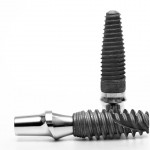
In recent years a number of variations to implant surfaces have been introduced as it is considered that surface topography has an important role. Modifications have included, sandblasting, acid-etching, grit- blasting, anodisation, discrete calcium-phosphate crystal deposition, coatings with biological molecules and chemical modification. The aim of this review was to assess he survival percentage, clinical and radiographic outcomes of sandblasted and acid-etched (SLA) dental implants and its modified surface (SLActive) in protocols involving immediate and early occlusal loading.
Searches were conducted in Medline, Embase, CENTRAL, and OpenGrey databases and the reference lists of included studies. Two reviewers screened, selected and abstracted data, independently. Randomised controlled trials (RCTs) and prospective cohort studies of at least 6-month duration were included. Studies/ case series in which only one implant sur- face (SLA or SLActive) and one loading protocol (immediate or early) were assessed were considered eligible for inclusion as well. RCTs were assessed for quality using the Cochrane risk of bias approach and observational studies using the Newcastle– Ottawa scale (NOS). The primary outcomes were Changes from baseline to follow-up of;:clinical attachment level (CAL), probing depth (PD) and radiographic changes in the peri-implant bone level; and number of implants lost.
- 23 articles reporting 19 studies (7 RCTs; 12 prospective observational studies) were included
- 7 RCTs (407 patients, 853 implants, 8% titanium plasma-sprayed, 41.5% SLA and 50.5% SLActive). One RCT was considered to be at low risk of bias the others were considered to be at unclear risk.
- 12 observational studies included 1394 SLA and 145 SLActive implants and were considered to be of medium methodological quality based on the NOS.
- A narrative summary of the studies was undertaken owing to marked heterogeneity of the loading periods, types of implants described and lack of occurrence of the outcome of interest.
- There were no significant differences reported in the studies in relation to implant loss or clinical parameters between the immediate/early loading and delayed loading protocols.
- Overall, 95% of SLA and 97% of SLActive implants still survive at the end of follow-up.
The authors concluded
Despite of the positive findings achieved by the included studies, few RCTs were available for analysis for SLActive implants. Study heterogeneity, scarcity of data and the lack of pooled estimates represent a limitation between studies’ comparisons and should be considered when interpreting the present findings.
Comment
The authors have taken a good methodological approach to this review. Although they have decided to include both RCTs and prospective studies they have summarised them separately. Observational studies are more prone to bias that RCTs and tend to lead to over estimation of effectiveness so this needs to be taken into consideration. The 2007 Cochrane review by Esposito et al considered the clinical performance of various types of implant. They included 16 RCTs and found limited evidence showing that implants with relatively smooth (turned) surfaces are less prone to lose bone due to chronic infection (perimplantitis) than implants with rougher surfaces. They called for more RCTs with a follow up period of at least 5 years with sufficient patients to detect differences. Two of the RCTs included in this new review were 60 months in duration and a third had 50 months follow up and the review authors also called for further long terms studies. These should preferably be high quality RCTs with sufficient numbers of patients.
Links
Chambrone L, Shibli JA, Mercu_rio CE, Cardoso B, Preshaw PM. Efficacy of standard (SLA) and modified sandblasted and acid-etched (SLActive) dental implants in promoting immediate and/or early occlusal loading protocols: a systematic review of prospective studies. Clin. Oral Impl. Res. 00, 2014, 1–12 doi: 10.1111/clr.12347
Esposito M, Murray-Curtis L, Grusovin MG, Coulthard P, Worthington HV. Interventions for replacing missing teeth: different types of dental implants. Cochrane Database of Systematic Reviews 2007, Issue 4. Art. No.: CD003815. DOI: 10.1002/14651858.CD003815.pub3.

“@TheDentalElf: Little evidence available on the effectiveness of SLA and SLActive dental implants http://t.co/FkxpT7BsSx”